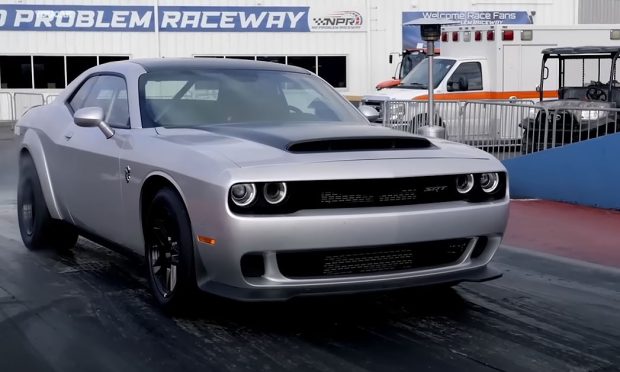
By Dave Ashton
Stalantis have high hopes of saving their 28 million internal combustion engines and the rest of the 1.4 billion existing internal combustion engines on the road with the help of synthetic fuels or e-fuels. The idea is to use carbon neutral fuels to directly replace fossil fuels for internal combustion engines. This basically could ensure the future survival of all present ICE vehicles.
Stellantis is currently testing gas and diesel engines across Dodge and the 13 other brands. If all goes well, then all current ICE Dodge vehicles can keep running into the future. But, before everyone starting throwing parties and breathing a sigh of relief that they don’t have to have an electric vehicle on their driveway, there are caveats as usual.
How e-fuels work
The reality of e-fuels is they put out as much as fossil fuels in terms of carbon emissions, but e-fuels are gained from eco-friendly sources, so the round trip is net zero. In other words, what is going out in terms of emissions, is there in the first place. It’s not fixing the greenhouse gas problem, but not adding to it either. This means the likes of the Demon with 1025 horsepower can carry on running, along with the billions of dollars of other vehicles currently on the road.
E-fuels are a category of synthetic low-carbon liquid fuels created using renewable energy sources captured from the atmosphere or via industrial processes. The process starts with generating electricity from the likes of solar, wind or hydroelectric, using the electricity to then split water molecules into hydrogen and oxygen. Carbon is then sourced from either the atmosphere or power plants, combined with the hydrogen to form synthetic hydrocarbons, then methane methanol or dimethyl. As we are not chemists or industrialists but suffice it to say it’s all about taking already available carbon and hydrogen and turn into using renewable fuel.
Pros and Cons
Like all things in life, e-fuels have pros and cons. The pros are e-fuels can be used in existing internal combustion engines with little or no modifications. Excess renewable energy can also be used to power the process. As for the cons, the whole process is currently expensive and energy intensive. The process of making e-fuels is also more costly than just pumping electricity into an electric vehicle.
However, e-fuels could decarbonise the whole current vehicle system, and areas like trucking and aviation are prime candidates, as they are not currently viable to swap over to electric. For instance, a Boeing 747 uses one gallon of fuel every second. For a 10-hour flight, it burns 36,000 gallons of fuel. An eco-friendly version of this fuel would be a welcome addition.
While battery-powered vehicles are a solution, battery technology needs to become much smaller, lighter and more efficient to fill in the gaps in all industries. Most electric vehicles are high-cost, leaving the rest of us to eke out as much longevity from our current ICE engines.
The likes of Porsche and Toyota are also looking into the world of synthetic fuels, with an obvious eye on keeping all internal combustion engine vehicles going, alongside the sale of EVs. Even F1 Is looking at adopting synthetic fuels by 2026 because let’s face it, the soundtrack is just as important as the visuals in motorsport.
Lastly, while electric vehicles are a great idea, not all electricity comes from renewable sources. A large chunk of electricity is still generated by burning fossil fuels. Natural gas and coal burning is still a large part of the electricity-making process.
Conclusion
The Dodge Charger Daytona SRT is the first electric muscle car, but it’s also a hard sell to traditional enthusiasts. Building both Evs and internal combustion engines could please all, especially if the new fuels were completely carbon neutral.
These new fuels could keep classic cars going indefinitely, with the peace of mind that they have a neutral carbon effect. There may cost a little more than the equivalent electricity bill for your car, but you could still enjoy the soundtrack of a real V8, either new or old.
While we are a few years of the dream becoming a reality, the ideas are at least in the works to keep the internal combustion engine going indefinitely.
Further Reading:
Below are some useful links to find out more about E-fuels and their possible future uses.
Press release from Dodge on E-fuel development.
A PDF from the Royal Society on Synthetic fuels for transport.
Porsche E-fuel plant in Chile produces synthetic fuels.
VN:F [1.9.22_1171]
VN:F [1.9.22_1171]
Source link


